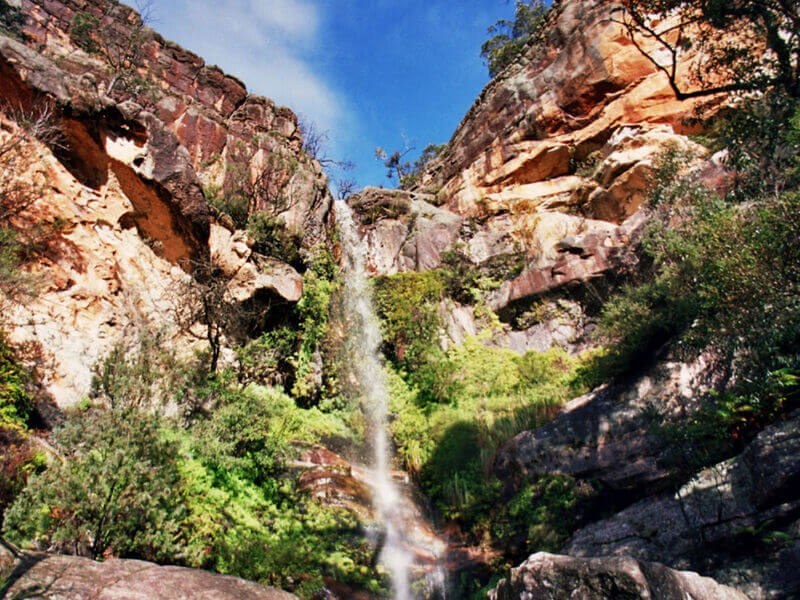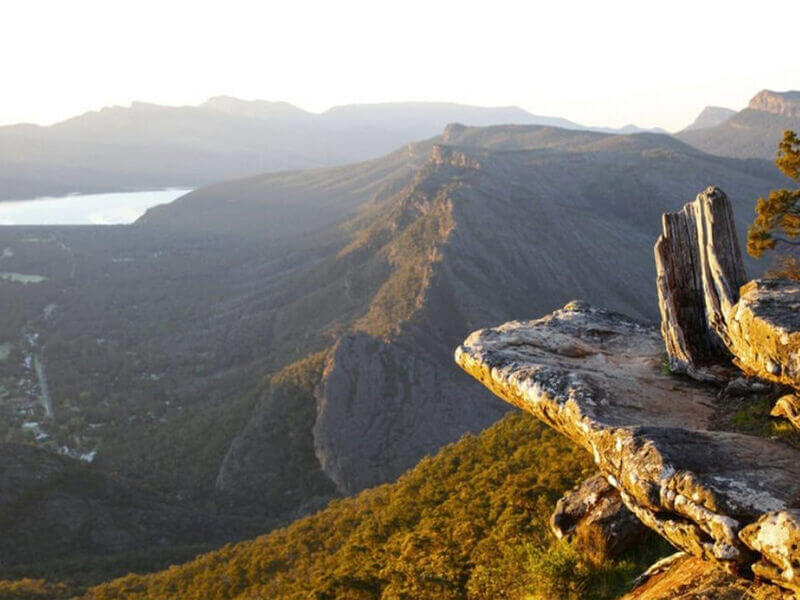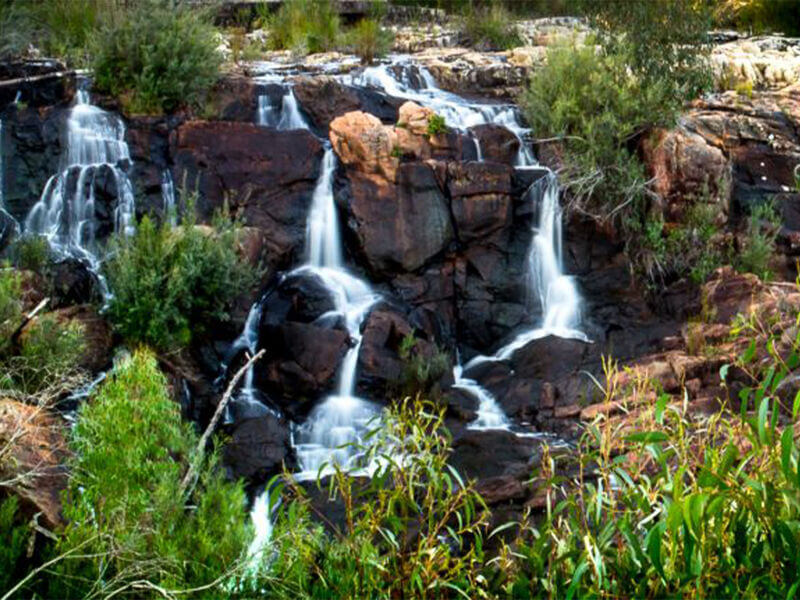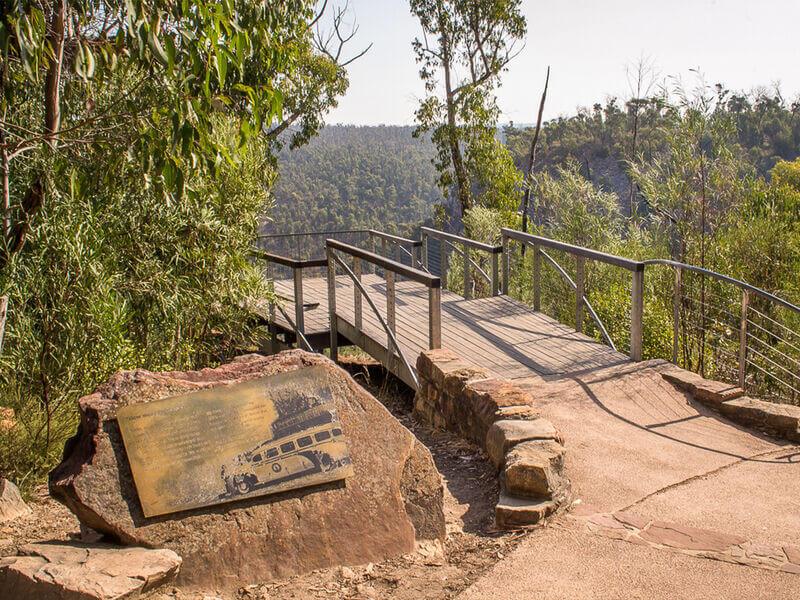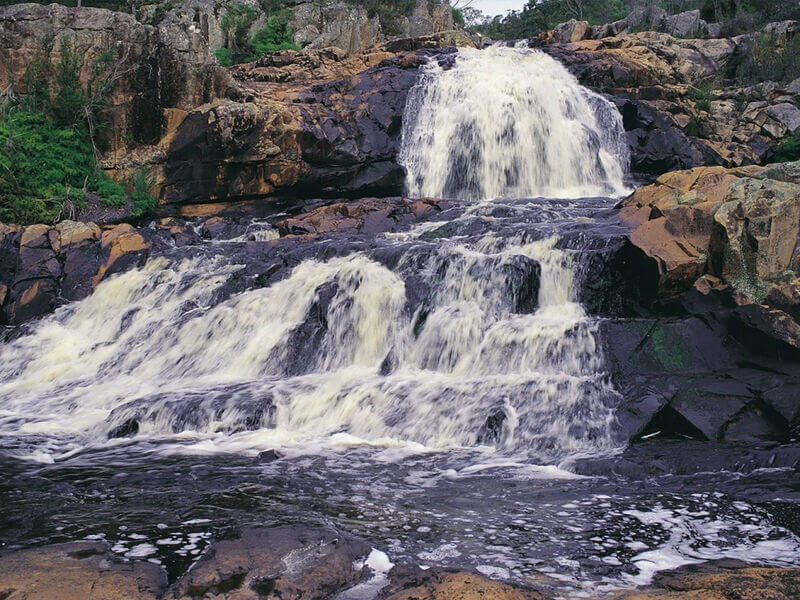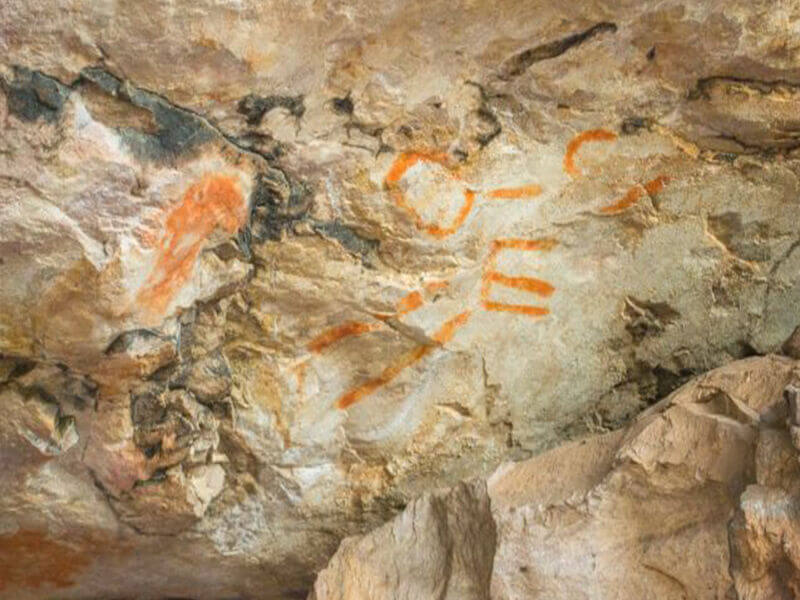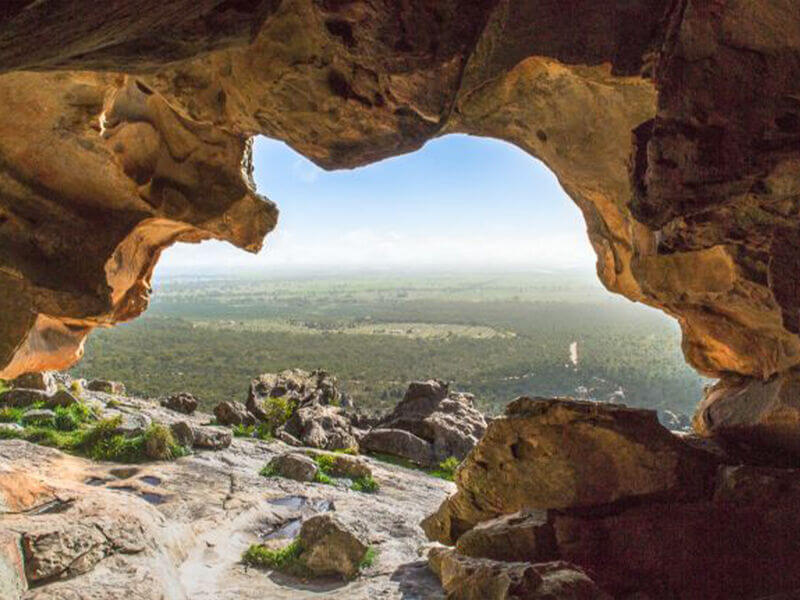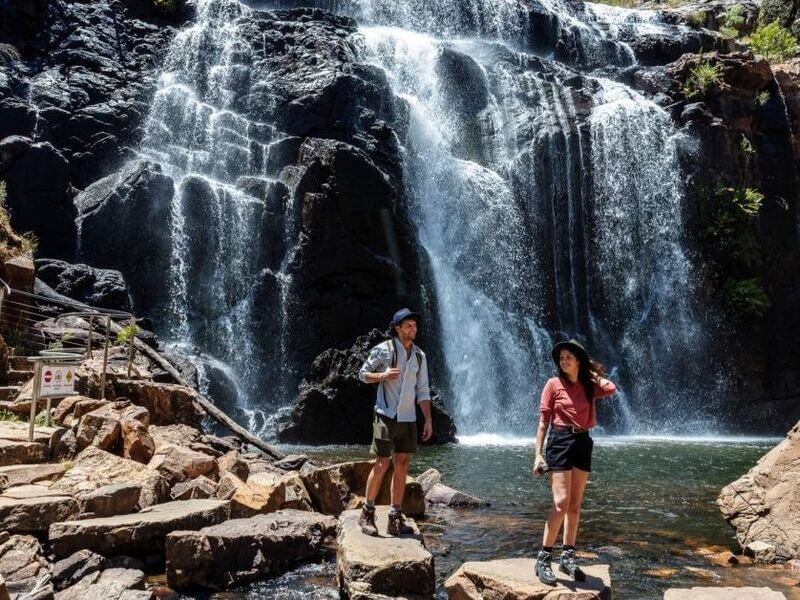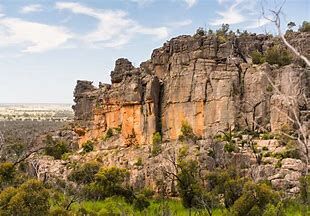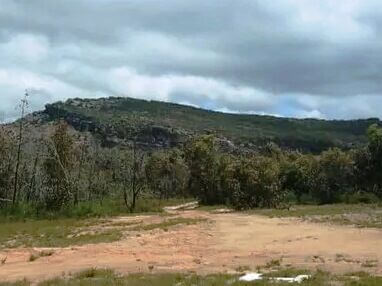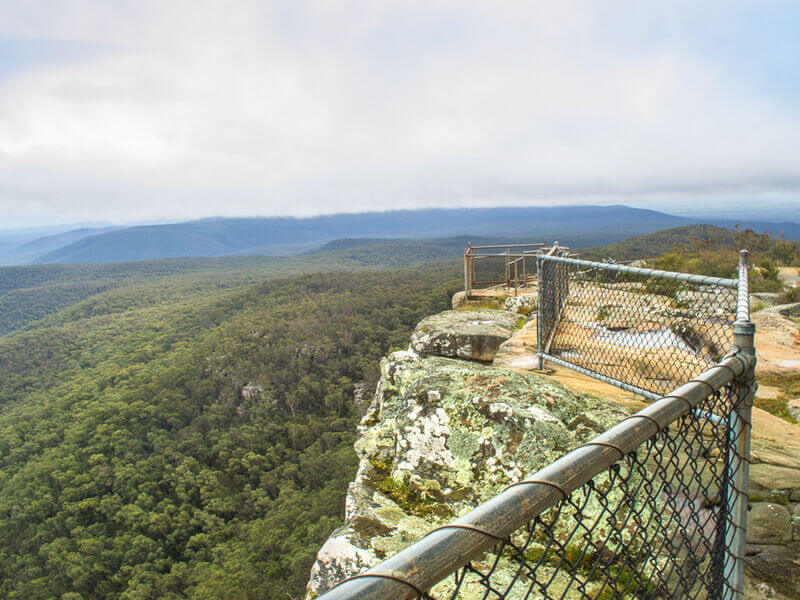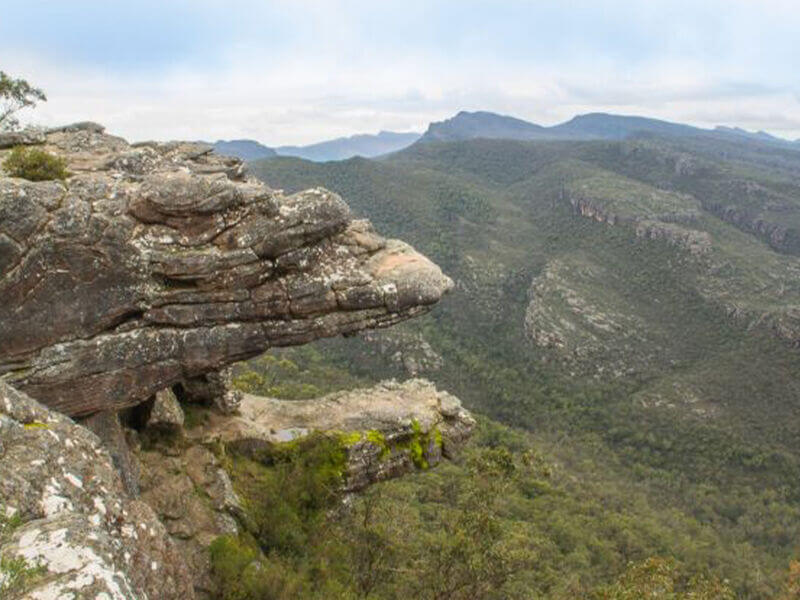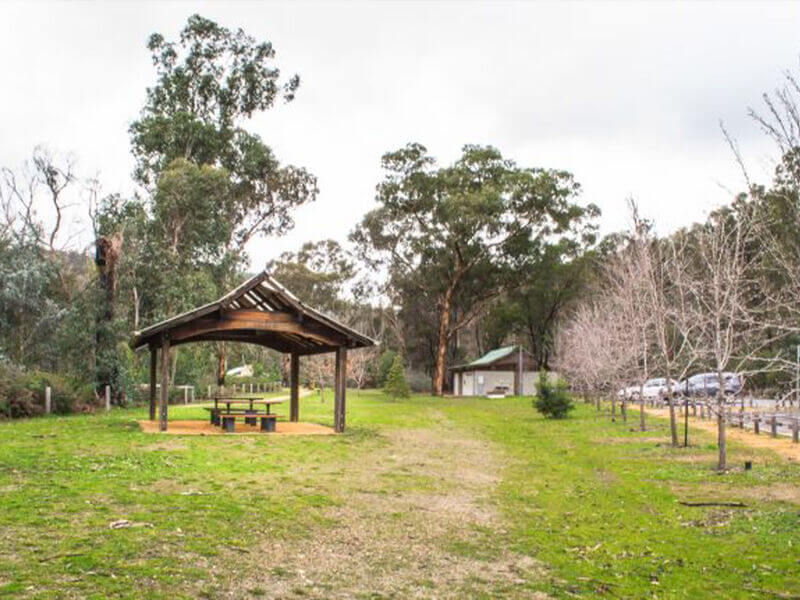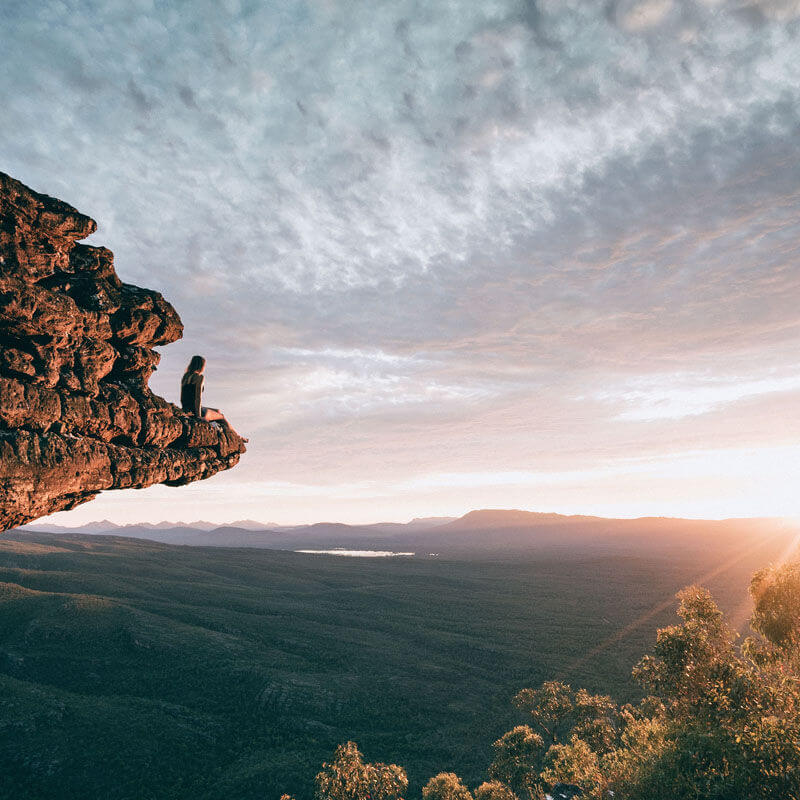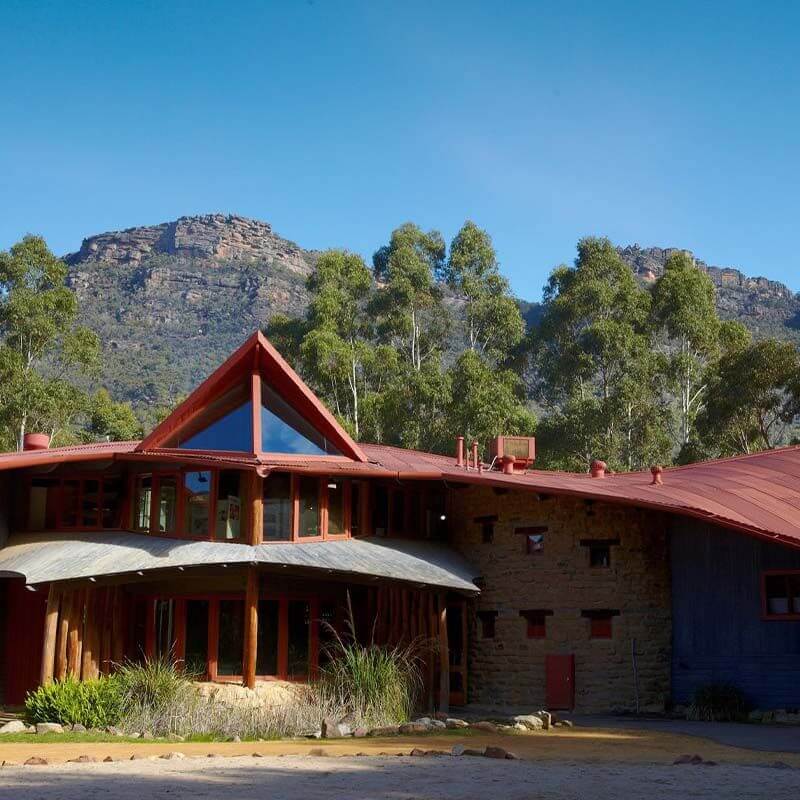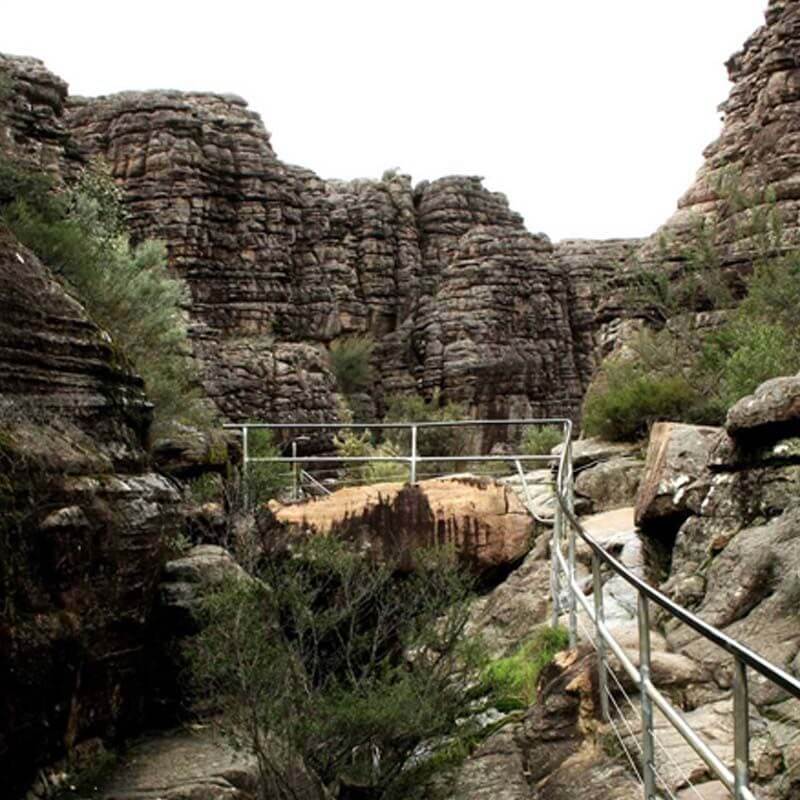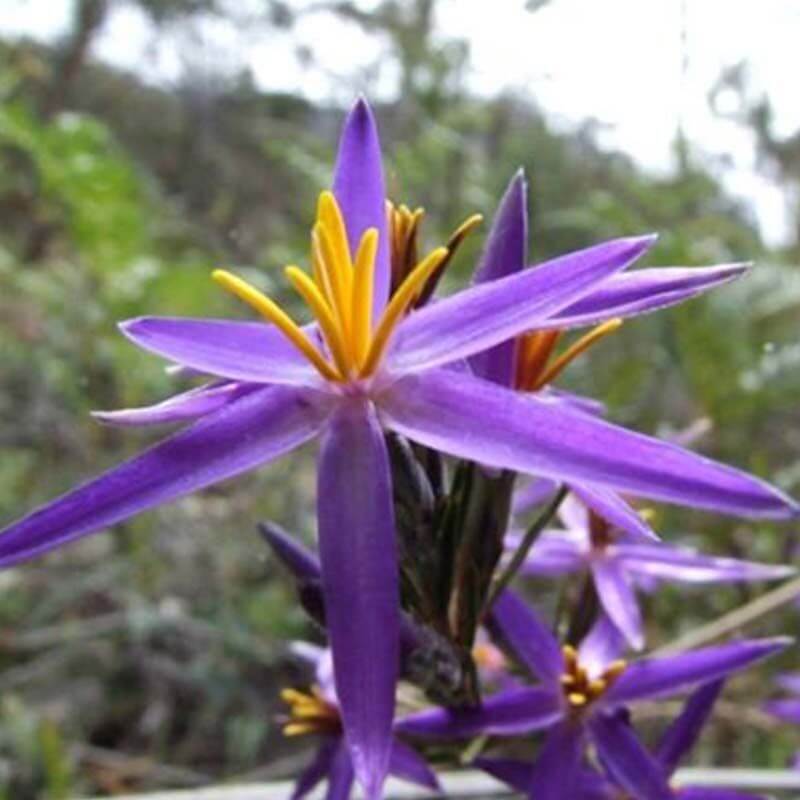Grampians National Park
View the surrounding landscape from a scenic lookout, follow a trail to MacKenzie Falls, one of the largest waterfalls in the state, see wildflowers or the spectacular rock formations of the Grampians National Park. All are easily accessible by foot or car.
Between Dadswell Bridge in the North and Dunkeld in the South, the four mountain ranges of this Park comprise some of the most impressive natural scenery in Victoria and one of the most significant Aboriginal rock art locations in the country.
Colourful wildflowers are outstanding among the almost 900 native plant species of the ranges, many of them unique to the area.
Beehive Falls
Beehive Falls is a popular tourist attraction within the Grampians region. Enjoy peace and tranquility at Beehive Falls.
Boroka Lookout
An easy stroll through open stringybark forest leads to two viewing platforms that look down the Halls Gap valley and out onto the eastern plains, and is suitable for people with limited mobility
Broken Falls
An easy stroll through open stringybark forest leads to a viewing platform, that overlooks Broken Falls, and is suitable for people with limited mobility.
Cranage's Lookout
Cranage's Lookout is easy to get to along a paved track, and is a mere 260 metres from the Mackenzie Falls parking and picnic area on Wartook Road.
Fish Falls
Fish Falls cascades 60 metres over terraced rocks into a pool below all year round. It is easily accessible from the popular Zumsteins Picnic Area
Gulgurn Manja Shelter
A short up-hill stroll leads to Gulgurn Manja Shelter - meaning ;‘Hands of Young People’.
Signs tell some of the stories and legends of the Jardwadjali people and the mountains they call Gariwerd.
Hollow Mountain
Follow the sign-posted track through a densely vegetated gully to start climbing through a woodland of banksias, grass-trees, native pines and eucalypts.
MacKenzie Falls (Mikunung wira)
The walk to a viewing platform, that overlooks MacKenzie Falls, is suitable for people with limited mobility. For the most spectacular view, approach the viewing platform from the right-hand fork of the track.The iconic and spectacular MacK
Mt Difficult - Briggs Bluff
This walk, suitable for fit and energetic walkers, can involve water crossings, slippery track surfaces, rock hopping and rock scrambling.
Mt Stapylton Loop
This walk, suitable for fit and energetic walkers, can involve water crossings, slippery track surfaces, rock hopping and rock scrambling.
Mt Zero Walk
From the picnic area, carefully cross the Halls Gap-Mt Zero Road to the sign-posted walking track. Track markers guide you up the rocky hillside.
Mudadgadjin Walk Picnic Area, Aboriginal Caves
The Mudadgadjin Walk is a famous scenic trail within the Black Range State Park. Starting at the Picnic area follow the track to the base of the Artisite.
Ngamadjidj Shelter
The walk from the carpark to Ngamadjidj Shelter is short and suitable for people with limited mobility.
Reeds Lookout
Follow the path around the gate and along the sealed road to the summit of Reeds Lookout. From this magnificent lookout you will receive breathtaking views over Victoria Valley, Victoria Range, Serra Range, Lake Wartook and the Mt Difficult
The Balconies
The track climbs gently from the carpark, through rock outcrops and a stringybark forest to the Balconies lookout. From this lookout there are panoramic views over the Victoria Valley.
Zumsteins Historic Area
Zumsteins Picnic Area has disabled access toilets, compacted gravel paths, electric barbecues and picnic shelters. A timber boardwalk is located along the banks of the MacKenzie River to allow visitors to interact with the river.
Grampians (Gariwerd)
Aboriginal people have had an association with the Grampians for more than 30,000 years.Traditionally known as Gariwerd, the land is at the centre of creation stories for many of the Aboriginal communities in south-western Victoria.
Discoveries of Indigenous Australian artefacts in the region include ancient oven mounds, scatterings of stone left over from tool making, and ancient rock art sites. The Grampians is home to the largest art sites in the state.

